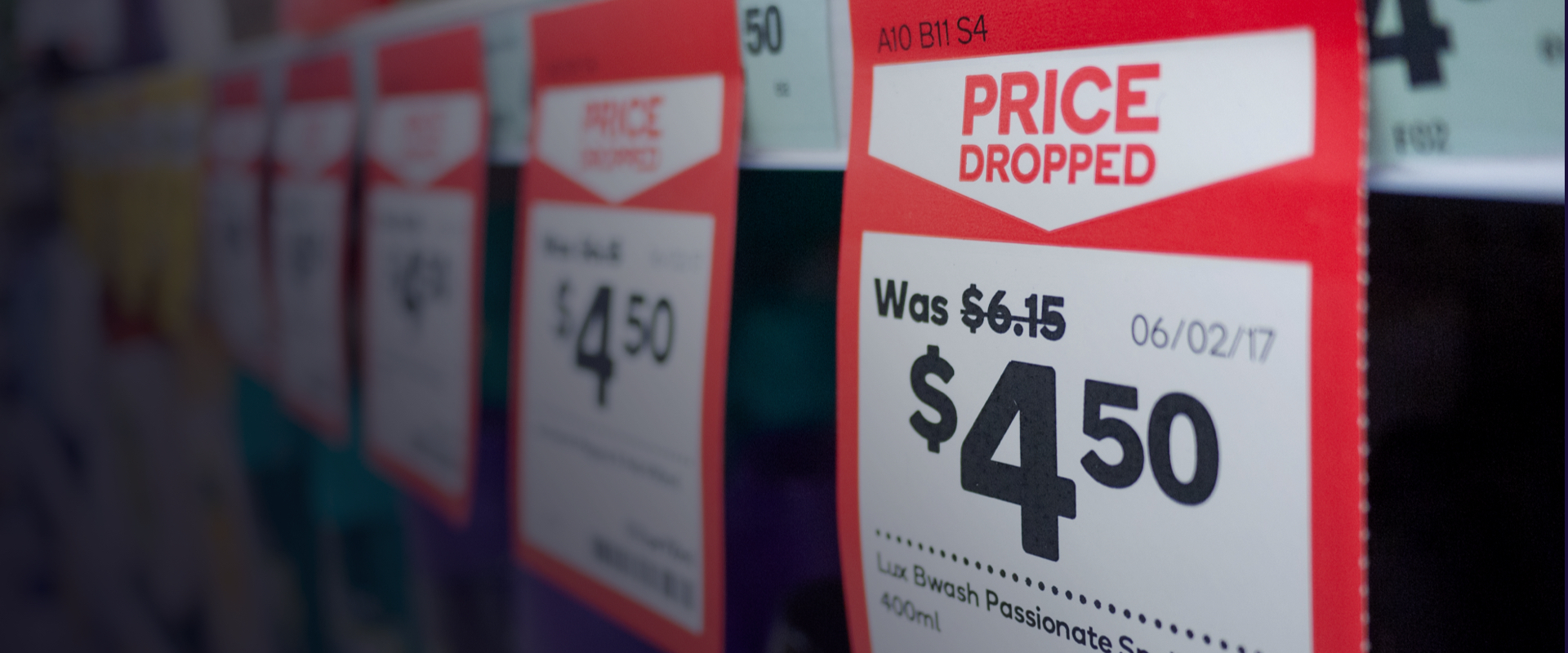With online shopping becoming increasingly important for brands, the concept of ‘product visibility’ within this ecosystem has emerged as the most noteworthy path to generate sales & win the Digital Shelf. Research shows that on Amazon, the first 3 products garner 64% of business generated. And post-pandemic, more and more people are now shopping online, which means your ‘digital product visibility’ becomes as critical as your in-store product visibility. What’s more, this digital shopper loves to start their search for products directly at leading marketplaces like Amazon, eBay, and the likes. As per the Shopper-First Retail report released by Salesforce almost 87% of shoppers begin product searches online. So, this is the window that brands have and this is where they need to hold their customer’s attention. But the primary question here is how to appear high up on your customer’s search?
Imagine the pages of an e-commerce marketplace as Digital Shelves and correlate that with the offline space. Will the customer sieve through a rack-full of products to reach for your brand, lying at the back of the shelf? No, they won’t. If they have to buy a personal care item, they will choose the brand that is visible to them at the front of the rack. In a similar vein, when they search for a product online on popular marketplaces, they will quickly click “add to cart” for the ones that come up top in the search.
Algorithms of popular e-commerce marketplaces are usually well-kept secrets, but here are 4 hacks brands can consider to increase product visibility on their Digital Shelf.
1. Optimize what you say about your products
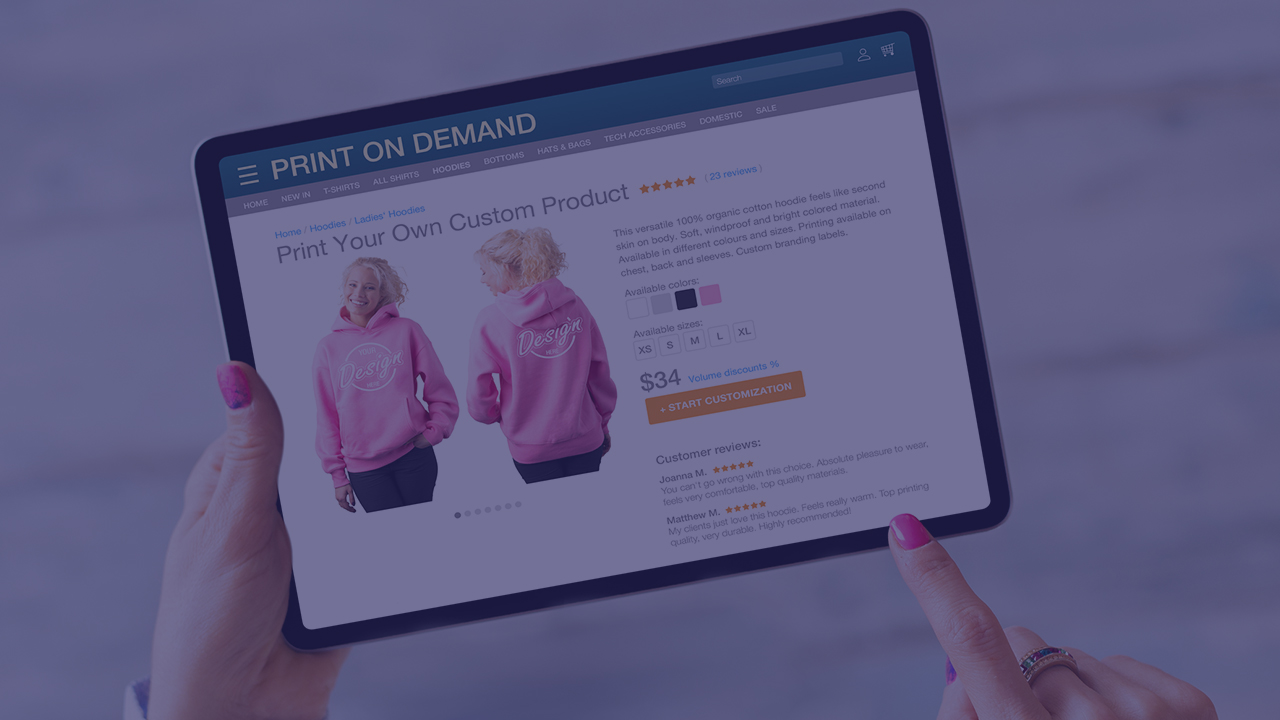
To ensure that your products are visible, you will have to work on the product listing content judiciously. And it’s all about using the right keywords. Here, you will have to tighten the strength of your content to ensure that both your listing text and titles are accurate, and include natural language search keywords that consumers normally use when searching for products. Ignore, jargon or business-heavy words, and think what a real consumer may use to search for a smartwatch – for instance. ‘Bluetooth watch’ or ‘Smart Watch’ or ‘Camera Watch’ etc. The product title below has it all covered. So no matter which of the 3 keywords a customer is searching for, this watch will come up in their search results.
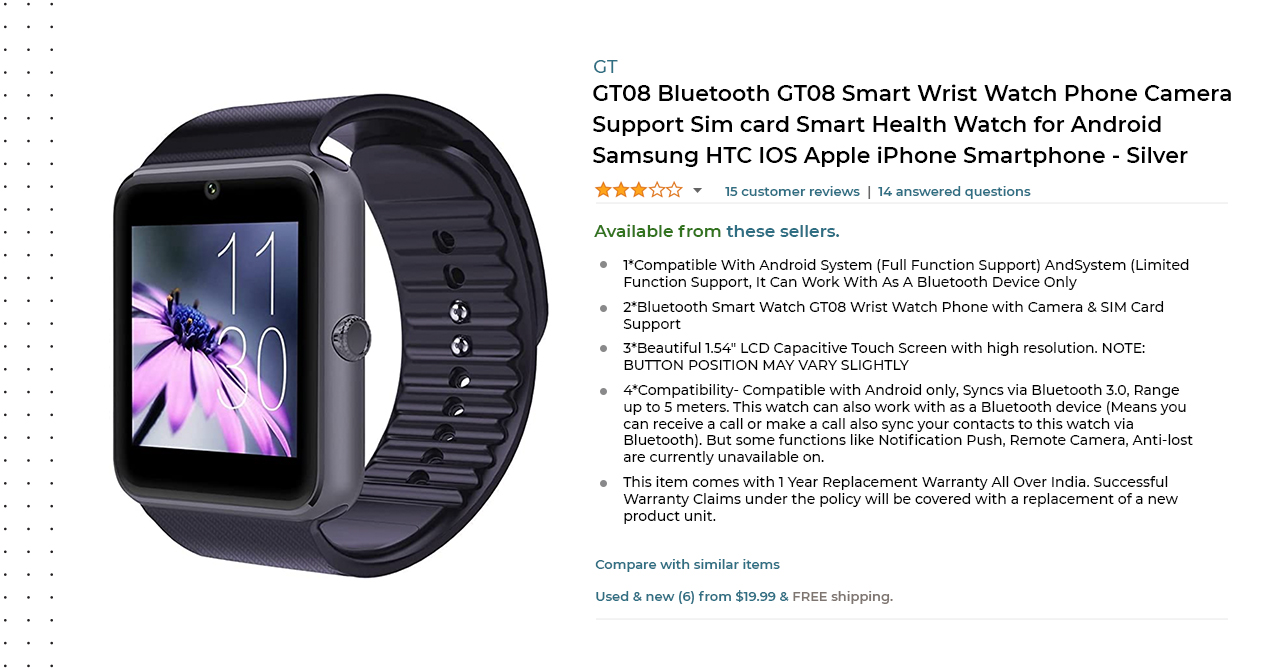
This aside, the title should highlight as much as possible about the product and the description should be pointed and readily related to the search one can use to look for it. For instance, in the below image Puracy, has not only used the word shampoo in its title, which normally the consumers will use to search, but has given all the major highlights as a part of the title. The consumer at a glance would get the whole picture inclusive of the quality, fragrance, quantity and the dispenser type.
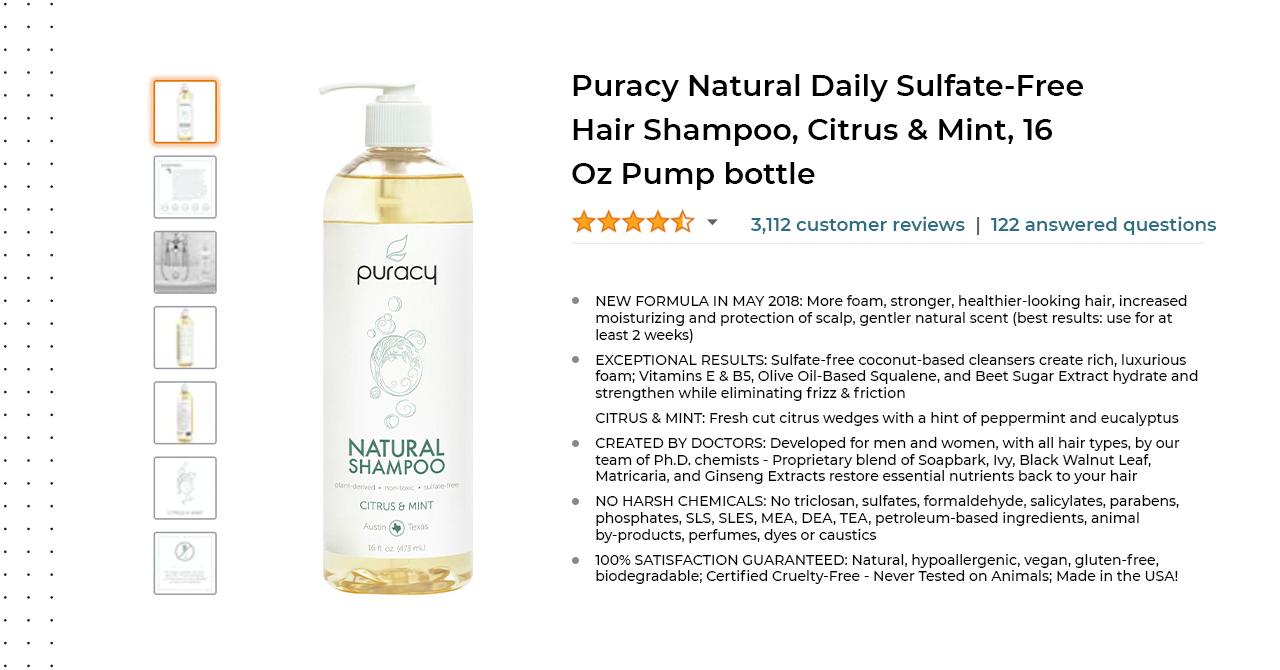
Search engines take consumer’s natural language preferences into consideration, so a bad or incomplete product description or title will never help customers see your brand easily on the marketplaces listing. Here’s a listing, which does not work at all.
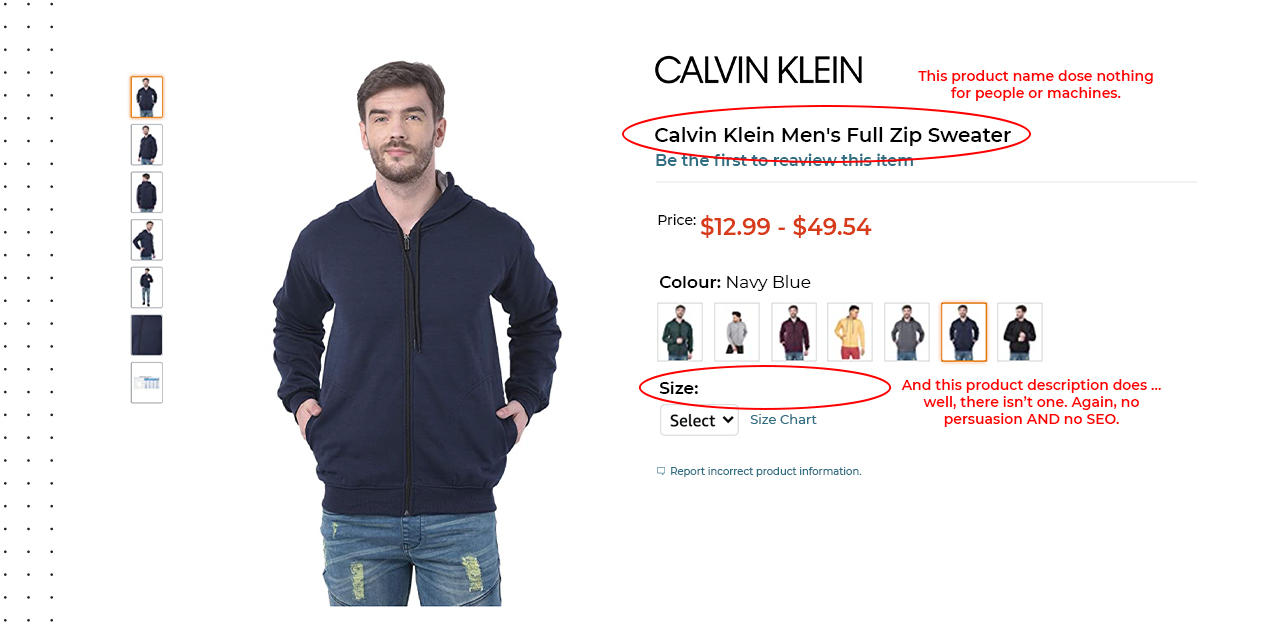
Let’s look at the above example closely. If the customer is a diehard fan of Calvin Klein and is searching for a Calvin Klein sweater, then this product will definitely show up in their search results, but what if he was looking to buy full sleeve polos or wanted a full sleeve sweater, or a navy blue sweater – even though this product fits the bill completely for all the searches, but it may not show up in his search results only because the right content/ keywords have not been used to describe the product. And that is why it is important to use common keywords in your product content that consumers normally use when searching for your product.
In fact, according to a recent Forrester survey 45% of online shoppers do not complete a purchase if they cannot find what they are looking for, and insufficient product information adds to the cause. If you want to audit your current e-commerce content, DataWeave can help!
2. Improve product ranking through the right reviews
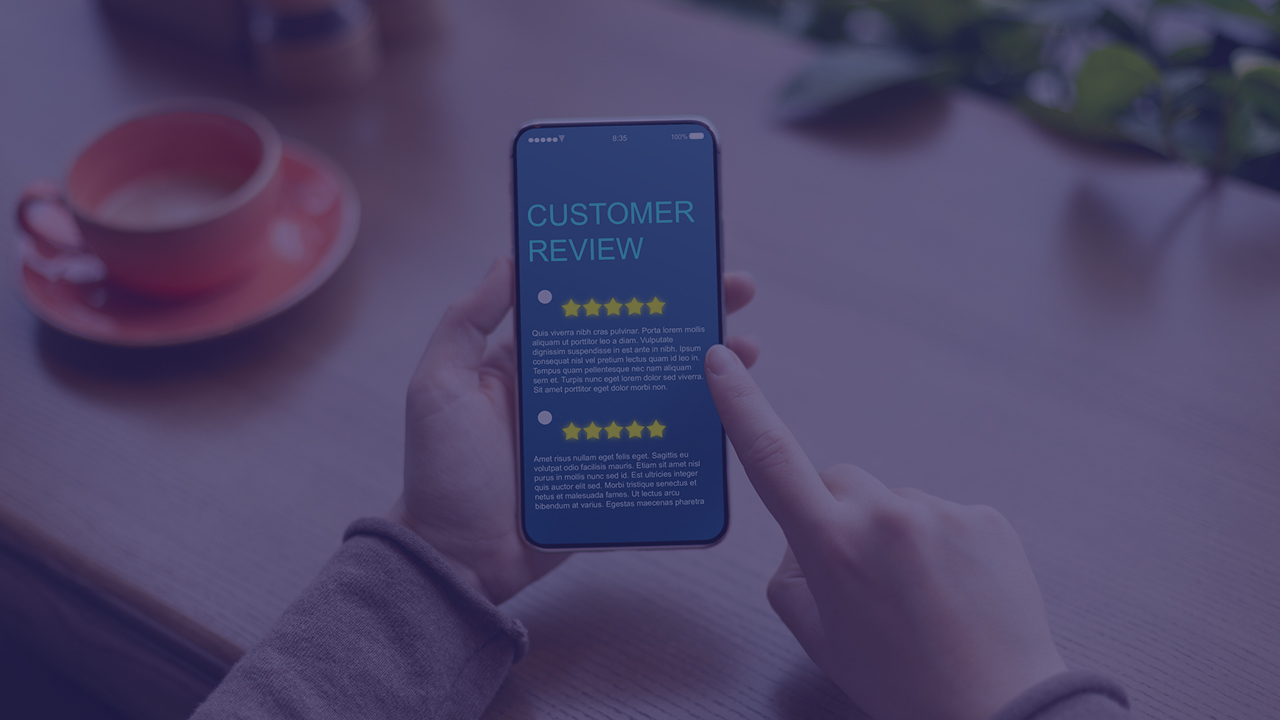
Marketplace search engines prioritize products with good reviews and ratings and show them higher up in search. This prompts product visibility and assures your brand of organic discoverability. So, it is important to fetch as many honest reviews and ratings for your products, in order to gain marketplace visibility.
Research shows that 88% of consumers trust online reviews as much as personal recommendations, and 72% of consumers are inspired to trust a brand based on the positive reviews it receives. Moreover, millennials, trust user-generated content 50% more than other media. Even though bad reviews are part and parcel of any business, a brand’s focus should be on ‘honest’ reviews. Real user-based reviews have the power to generate customer trust. When customers begin to trust your product and in your brand, they are more willing to add that product to their cart and finalize their purchase. Good product reviews will certainly make your Digital Shelf a lot more attractive & boost your product sales. Learn how DataWeave can helps brands monitor & stay on top of their Reviews & Ratings
3. Give importance to pricing and attain the sweet spot with product ranking

Intelligent pricing, which is not too low or too high should be your weapon to make your brand gain ample visibility among its competitors. Moreover, if the cost of your products is ominously dissimilar from other products it is competing with, it is bound to impact your position in search results. To achieve great results, either you can consider your competitors and analyse the pricing to reach a perfect mid-ground or choose a dynamic pricing strategy. This strategy will allow your products to cost less than the competition, marginally.
Amazon is pretty sophisticated in this department and reprices top-selling items 3 or 4 times per day and the same can be repriced up to 12 times daily. Following in line, McKinsey reports that multichannel leaders are also changing the prices on 10 to 20 percent for their online assortment daily.At DataWeave, we can help brands track prices on a daily or even every few hours during sale season, when prices are the most sensitive. Learn more here.
4. Invest in paid advertising to improve your listing

Investing money in paid promotion at e-commerce marketplaces will help you gain visibility and push your products on top of the first page of your category listing. Today, e-commerce platforms allow you to pay for promoted listings that are displayed near organic search results. In fact, a paid Pay Per Click (PPC) campaign will allow you to build up your sales volume and brand awareness, which will in turn assure your brand of long-term organic search placement.
The idea of sponsored ads is getting well-received all across and Amazon’s accelerating ad revenue growth is a living proof of this. In the fourth quarter of 2020, Amazon’s ad revenue reached $7.95 billion, up 66% over the previous year.
The e-commerce marketplace is expanding and in 2020, retail e-commerce sales worldwide amounted to 4.28 trillion US dollars and e-retail revenues are projected to grow to 5.4 trillion US dollars in 2022. To be able to make the most of this growing market, make sure your brand is winning the Digital Shelf, starting by winning the appropriate ‘Share of Search’. Want to learn how DataWeave can help you win the Digital Shelf? Sign up for a demo with our team to know more.
Book a Demo
Login
For accounts configured with Google ID, use Google login on top.
For accounts using SSO Services, use the button marked "Single Sign-on".


